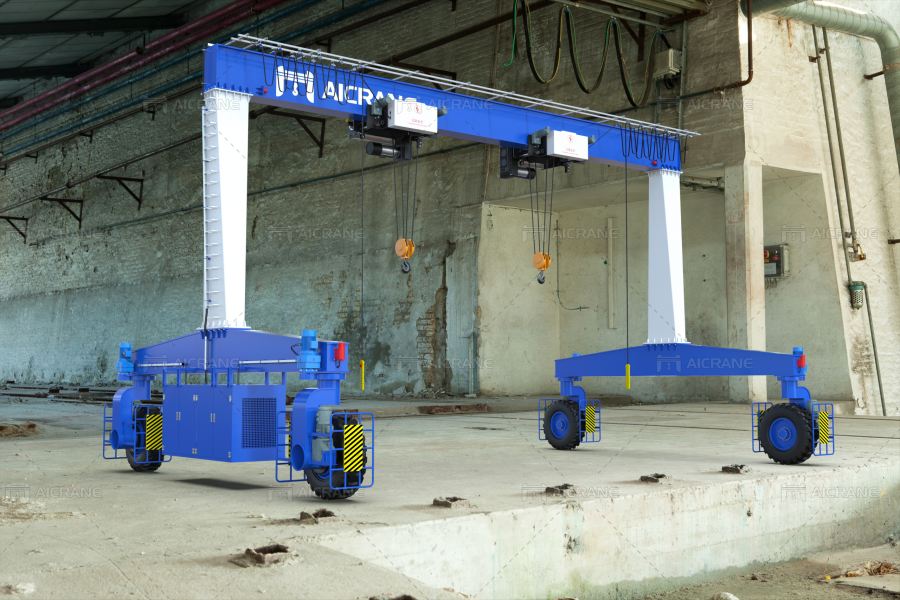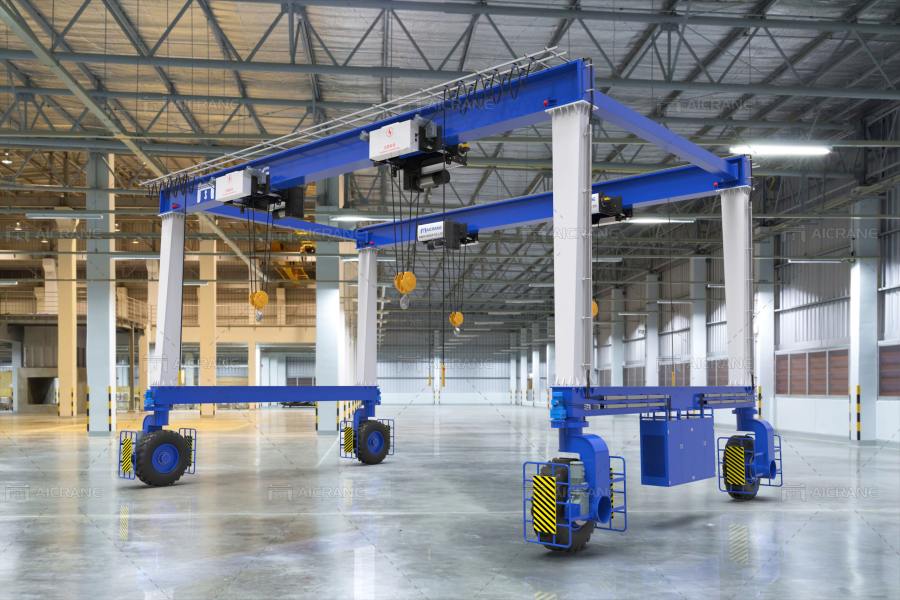RTG cranes are widely used in container terminals, intermodal yards, and port facilities for efficient container handling operations. They offer several smart features, have diverse applications, and are equipped with various safety devices. Let’s explore each aspect in detail:
Smart Features of RTG Rubber Tyred Gantry Cranes
Automation and Remote Control: RTG cranes can be equipped with automation technologies, such as container position detection systems and remote control capabilities. This allows operators to control the crane’s movements from a centralized control room, enhancing efficiency and safety.
Anti-Sway Systems: RTG cranes often incorporate anti-sway systems, which use sensors and advanced algorithms to minimize the swinging motion of containers during lifting and positioning. This feature improves the accuracy and speed of container handling.
Collision Avoidance Systems: Some RTG rubber tyred gantry cranes employ collision avoidance systems that utilize sensors and cameras to detect obstacles or other cranes in the vicinity. These systems can alert the operator and automatically apply brakes or adjust the crane’s movements to prevent collisions.

Diagnostic and Monitoring Systems: RTG cranes can be equipped with diagnostic and monitoring systems that provide real-time information about the crane’s performance, condition, and maintenance requirements. This enables proactive maintenance planning and reduces downtime.
Main Applications of RTG Cranes
Container Terminals: RTG cranes are extensively used in container terminals for stacking and transferring containers between trucks, railcars, and storage areas. They play a crucial role in the efficient movement of containers within the terminal.
Intermodal Yards: RTG cranes are also employed in intermodal yards where containers are transferred between different modes of transportation, such as trucks and trains. They facilitate the smooth transfer of containers, optimizing intermodal logistics.
Port Facilities: RTG cranes can be found in various port facilities, including container depots and logistics hubs. They assist in container handling operations, including loading and unloading ships, as well as container storage and retrieval.
Safety Devices on RTG Gantry Cranes
Load Monitoring Systems: RTG cranes are equipped with load monitoring systems that ensure the crane operates within safe load limits. These systems provide real-time information about the load being lifted, helping prevent overloading and structural damage.
Travel Limit Switches: RTG cranes feature travel limit switches that prevent the crane from traveling beyond predetermined safe zones. These switches act as safety stops, avoiding collisions with other cranes or structures.
Emergency Stop Systems: RTG cranes are equipped with emergency stop buttons that allow operators to immediately halt all crane movements in case of an emergency or unsafe situation.
Anemometer: Anemometers, which measure wind speed and direction, are often installed on RTG gantry cranes. They provide critical information to operators to ensure safe crane operation during high wind conditions.
Overhead Obstacle Detection: Some RTG cranes incorporate overhead obstacle detection systems that use sensors to identify and avoid collisions with overhead structures, such as power lines or gantry structures.
These smart features, along with the diverse applications and safety devices, make RTG cranes essential equipment in container handling operations. They enable efficient and safe movement of containers within port facilities, contributing to the overall productivity and logistics of the shipping industry. If you would like to know more information about different types of cranes and plan to select a suitable one for your business, you can just check this website for more details https://www.ellsencranes.com/.
